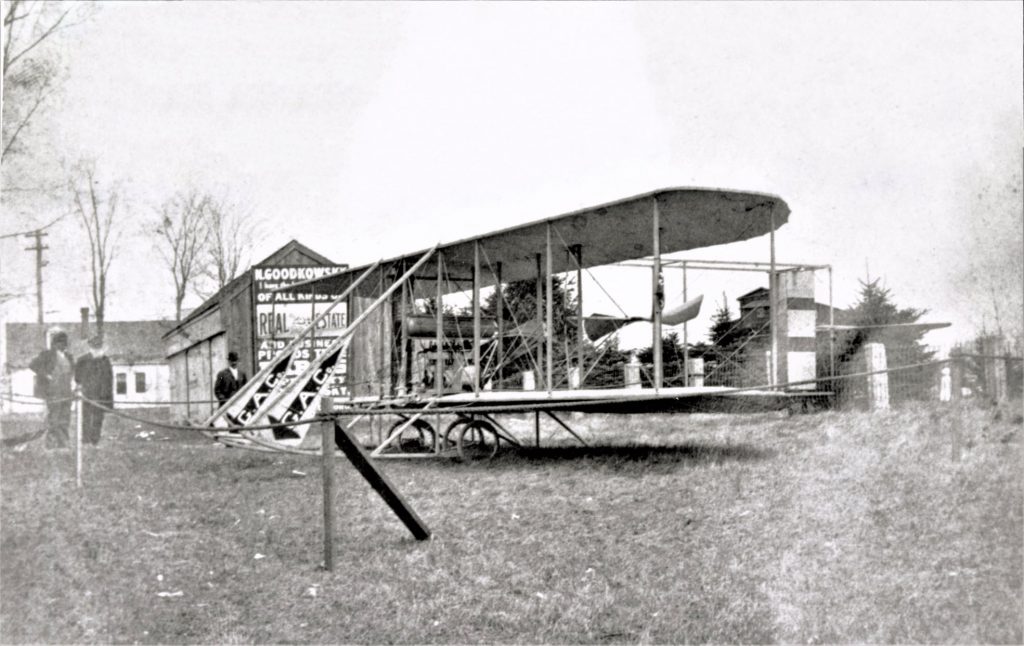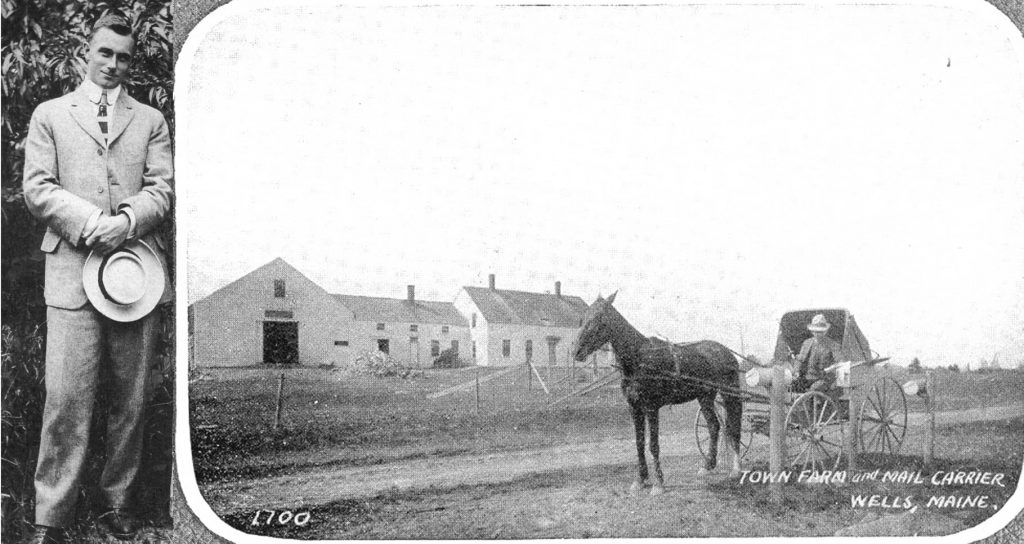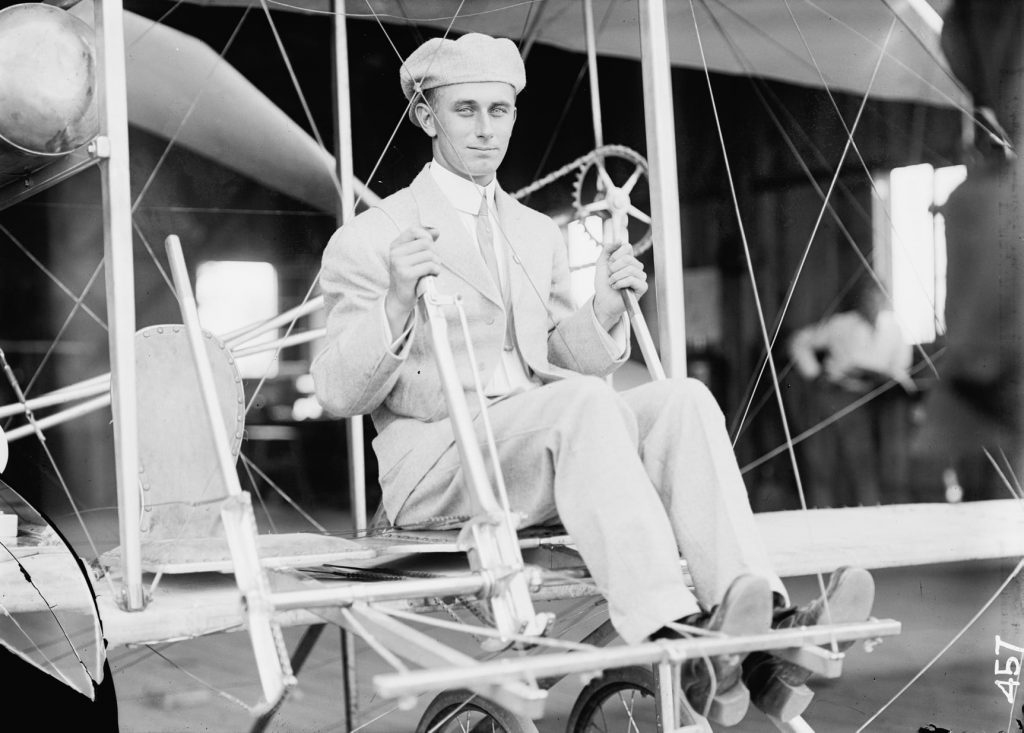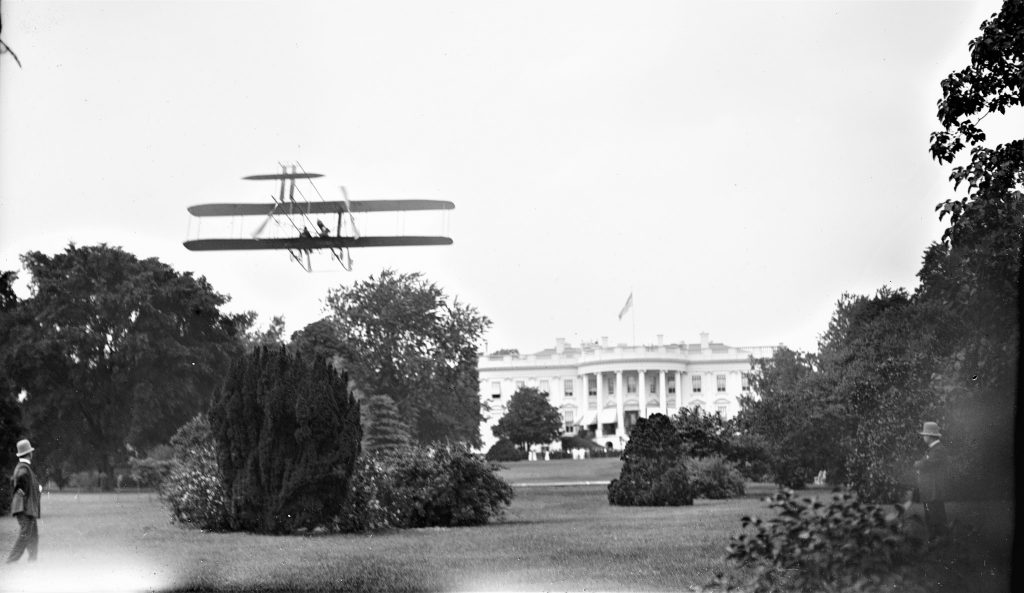Early-bird Aviator Makes Emergency Landing at Town House Corners Kennebunkport
Craving a hero’s welcome, pilot Harry N. Atwood celebrated May Day 1912 with an impromptu flight over Southern Maine in a 1200-pound Burgess Wright biplane of his own design. He claimed the trip was just for fun but, at that time, the Portland, Maine Board of Trade happened to be offering a cash prize for the first aviator to fly across the State.
Maine folks knew all about Harry. During the summer of 1911 he had been mentioned in Maine newspapers more often than President Taft. Atwood had become the head flight instructor at a new aviation school in Squantum, MA after just two weeks of flight training at Wright Brother’s Flying School and less than 2 hours experience in the air. As such, he delegated most of the actual teaching to less qualified colleagues and spent his time flying wherever there was a crowd to cheer his landing; most notably on the south lawn of the White House at the invitation of the first family in July 1911.
May 1st, 1912 was a beautiful day. Atwood took off from the Saugus Aviation Field at 4:45 pm flying north along the seacoast. He got temporarily disoriented when he followed the wrong branch of the railroad, but he eventually got back on track just as the sun was setting. He decided he’d better look for a place to land for the night. This was no small task in the heavily forested State of Maine.
Harry finally put down gracefully in a pasture at the Wells Poor Farm on Branch Rd. That evening, Poor Farm proprietor Mr. Fred Allen took him into the village to a social hosted by the Ladies Relief Corps. According to Atwood’s biographer, the pilot was a dangerously handsome young man of twenty-eight in 1912 with eyes that could look right through you. The ladies of the Corps were delighted. Harry enjoyed a good night’s sleep at the Poor Farm and awoke the following morning to a large crowd, predominately female, gathered to witness his departure. The people cheered as his biplane ascended at 6 am.
Over the village of Kennebunkport Atwood’s engine started to sputter. It died altogether as he passed the shipyard, forcing him into descent. He spotted what looked like a safe place to land near the Kennebunkport Poor Farm but if the wind hadn’t been with him, he would never have made Charles O. Clough’s field at Town House Corners. The biplane set down gently between the First Church and the Arundel Cemetery. Neighbors cheered when he stepped out of the plane without so much as a wrinkle in his stylish summer suit.
Town House Corners was a hub of The Atlantic Shore Line Railway. The trolley company increased their ridership exponentially that day by posting placards on all their cars advertising to riders from Biddeford, Sanford and Kennebunk that the first biplane ever to fly over Maine could be viewed at the Town House all day for the price of a trolley ticket.
The May 2nd and 3rd issues of the Biddeford Daily Journal covered the story. “Soon after landing, with the assistance of some 50 men and boys, the machine was pushed on its wheels across the field to the road and thence to a vacant lot opposite the trolley waiting room where it was roped off. It was well after noon when the mechanicians appeared and then it was a case of loosen wires and remove braces until the great wings which spread nearly 40 feet, could be folded in toward the center until the machine had become small enough to be hauled on the highway. It was then attached to an automobile and started on its land journey back to Massachusetts”.
The charismatic Harry N. Atwood lived to be 85 years old.








Leave a Reply